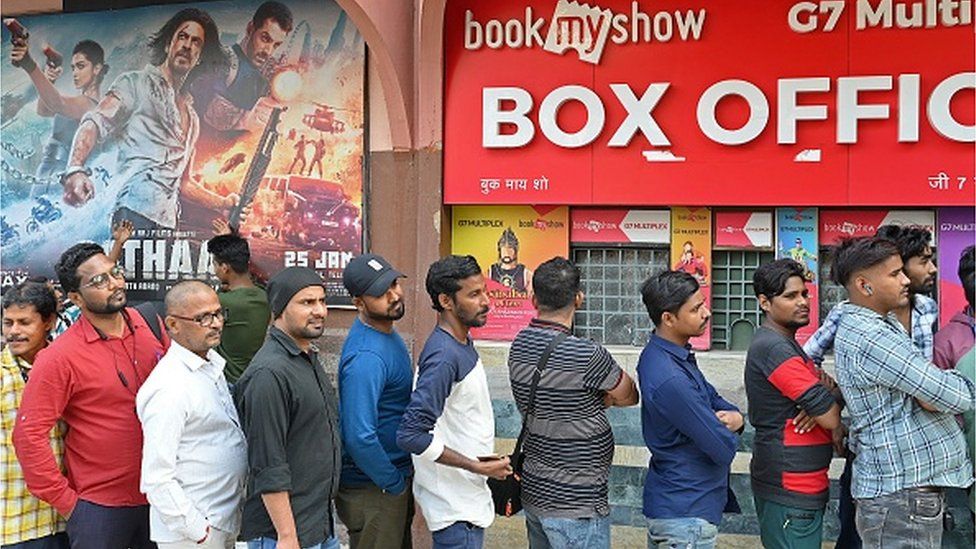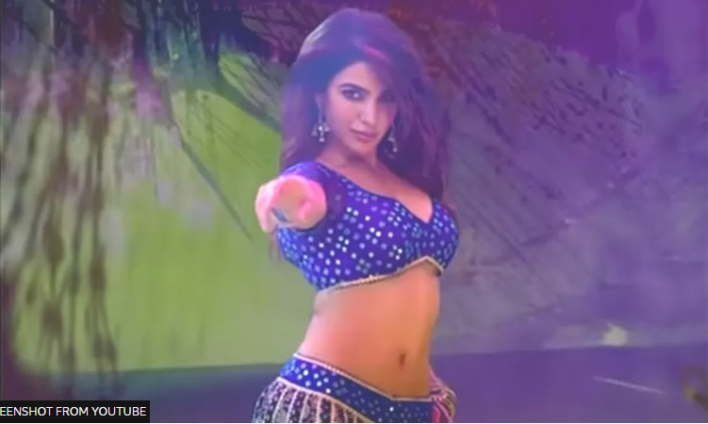Bollywood, India's hugely popular Hindi film industry, is often described as a man's world.
It's something that's been talked about for a long time, but now a new study shows just how little gender equality there is - both on and off screen.
The $2.1bn (£1.5bn) industry produces hundreds of films every year and has a massive following among Indians globally. The sway the films and the stars have on their fans' imagination cannot be overstated. But over the years, many Bollywood films have been criticised for being regressive, promoting misogyny and gender biases.
In a first of its kind study, researchers from Tiss (Tata Institute of Social Sciences) in Mumbai attempted to quantify just how severe the stranglehold of patriarchy on Hindi cinema is.
They selected 25 of the biggest box-office hits from 2019, the last pre-pandemic year, and 10 women-centric films between 2012 and 2019 - the period was chosen to see if there were any changes in the narrative following the 2012 gang-rape of a female student on a bus in Delhi, the resulting uproar over the crime and the introduction of tough new laws to deal with crimes against women.
The list of hits included War, Kabir Singh, Mission Mangal, Dabangg3, Housefull4 and Article 15 and the women-centric films included Raazi, Queen, Lipstick Under My Burkha and Margarita with a Straw, among others.
The researchers studied nearly 2,000 on-screen characters to see the types of occupation actors played and analysed the films over several parameters such as sexual stereotyping, consent and intimacy and harassment. They counted the number of LGBTQ+ and disabled characters and how they were portrayed, and studied how many women worked off-screen on these films.
They have concluded that though women-centric films give some reason for optimism, the box-office hits continue to be sexist and regressive and women and queer representation remains abysmal in them.
For instance, 72% of characters in the films that were analysed were played by men, 26% by women and 2% by queer actors.

Prof Lakshmi Lingam, the project lead for the study, says "the big bucks are riding on all big men in Bollywood" and the filmmakers say "a very strong female character won't work with the audiences".
"There's very little attempt to do something different because patriarchal norms colour people's idea of a story or narrative and they come to believe that this is what can give them money," she told the BBC.
So, she says, they stick to the "formula".
"The protagonist has to be male from the upper caste, the female lead has to be thin and beautiful. She has to be coy and demure who expresses consent through gestures rather than words, but wears sexually revealing clothing and has to be somewhat modern to allow for her to be in a pre-marital relationship which is a transgression."
The jobs on screen are also imagined through a narrow gender lens - Prof Lingam says although "42% female leads were employed in these films - [way higher than India's real employment figures of 25.1%] - they were in very stereotypical professions".
"Nine in 10 men were in decision-making roles playing army officers, policemen, politicians and crime lords; women mostly played doctors and nurses, teachers and journalists and only one in 10 were in decision making roles," she says.
The portrayal of the LGBTQ+ characters, the study shows, remains hugely problematic - they were never in a decision-making role and often a butt of sexist jokes. The disabled fared equally poorly -making up only 0.5% of all characters and most were used as tropes to invoke sympathy or as comic relief.
"Filmmakers say it's the reality they're showing. But there is so much other reality that they do not show. They swing between reality and fantasy to justify being like this," Prof Lingam says.
The depiction of women and queergender in the industry, she adds, must change because "real life is also dictated by what we see in cinema".
"In India, where families and schools rarely teach about sex education and consent, all our responses are influenced by books and cinema," she says, adding that it's a problem when a film like Kabir Singh shows the male lead stalking and harassing the heroine to woo her.
"It normalises toxic masculinity. so when a woman is stalked or harassed on the street, everyone says it happens. And there is rarely any pushback."

A few films though, she points out, are breaking from the mould - for instance, in Mission Mangal, when a rocket scientist, played by Vidya Balan, is berated by her husband for spending too much time at work and ignoring their children, she turns around and asks him if children aren't his responsibility too.
Queen and Lipstick Under my Burkha were among a handful of films that were led by women actors and revolved around strong female characters. But the number of such films is still very low.
Visual media, Prof Lingam says, "can bring new narratives into the conversation and change won't happen overnight, but it will happen over time".
The Covid-19 pandemic and the lockdown, she says, have already shown the way forward. "There's a lot of churn in society and people are producing different content to reflect that. There's a lot of interesting content on OTT platforms that is doing well."
On the other hand, the Bollywood formula is no longer working. "Many male-dominated violent films helmed by some of our biggest stars such as Salman Khan and Akshay Kumar have bombed. The one exception has been Shah Rukh Khan's Pathaan."
So the industry, she says, needs to re-imagine these ideas.
"The typical thinking is that a majority of the audience is male so films are being made for them. We are not saying don't do those films, but do a spectrum of films so that there is a wide variety."
One reason, she says, why the Bollywood gaze is so overwhelmingly male is because there are so few women working off-screen in the industry and even fewer in core filmmaking departments - the films Tiss studied had more than 26,300 men and only 4,100 women in the crew.
"If films are made for a diverse audience, by a diverse people behind the screen, the stories will also be diverse," says Prof Lingam.
Latest Stories
-
Burnley score late to draw with Manchester United at Old Trafford
22 mins -
Bayer Leverkusen extend unbeaten run to 46 games after draw with Stuttgart
25 mins -
Chelsea come from two goals down to draw against Aston Villa
29 mins -
Andre Ayew scores in Le Havre’s 3-3 draw with PSG
39 mins -
GPL 2023/24: Kotoko draw with Medeama; Samartex go 7 points clear of Nations FC
51 mins -
Mahama cuts sod for construction of new multipurpose Jakpa palace in Damongo
1 hour -
NSS management assists Papao fire victims
2 hours -
EXPLAINER: Will dumsor end soon?
2 hours -
IMANI Africa takes on EC, accuses it of lying and publishing half truths
3 hours -
Manasseh Azure calls for investigation and prosecution of those responsible for GRA/SML contract
3 hours -
Kwesi Atuahene: Ghana’s health capital depends on HealthTech – Africa Center for Digital Transformation
4 hours -
13 signs your wife is planning on leaving you and you have no idea
4 hours -
IMANI Africa: Ghana’s EC’s dangerous and pathological conduct
4 hours -
If I speak there will be fire – Salah on Klopp row
5 hours -
Grieving after divorce is normal, but this particular kind of grief isn’t
5 hours

